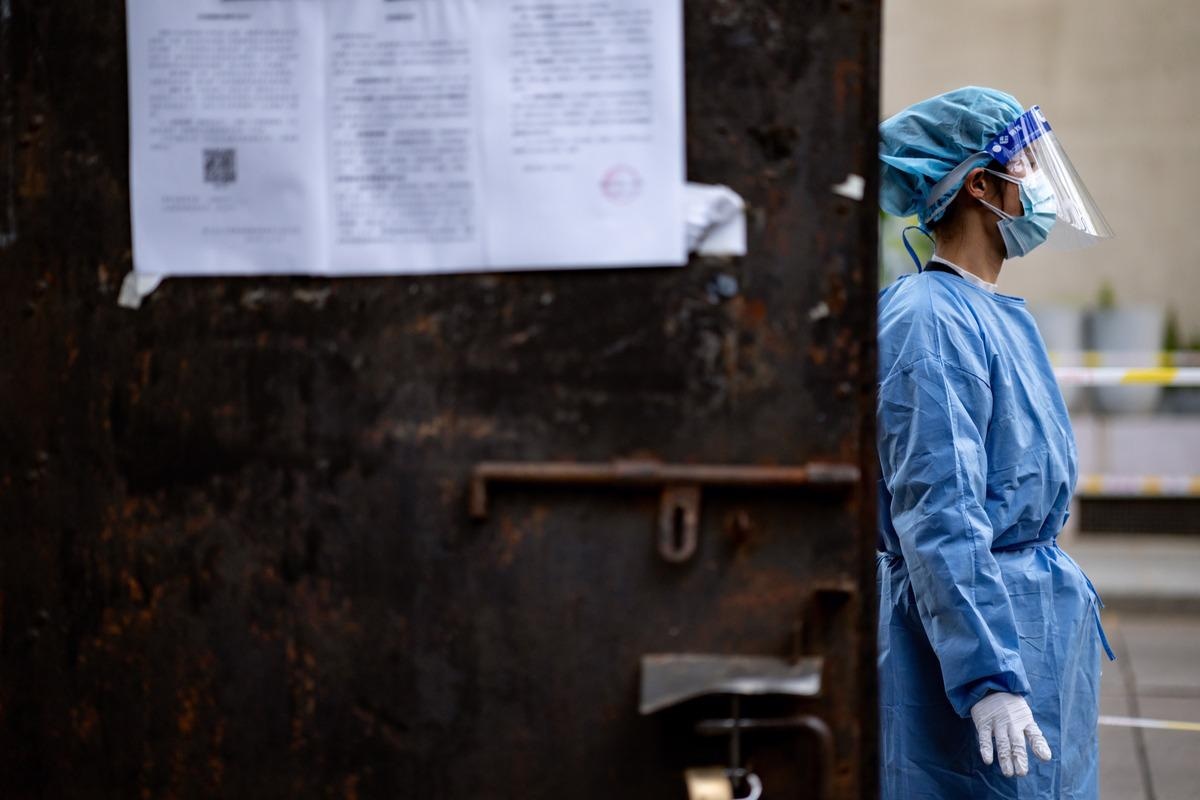In a recent study posted to the medRxiv* preprint server, researchers investigated whether strict lockdowns could effectively reduce the severe acute respiratory syndrome coronavirus 2 (SARS-CoV-2) Omicron variant transmission in Shanghai.

Background
The high transmissibility and enhanced immune-evasiveness of Omicron coupled with the lack of Omicron-targeted vaccines warrant the need for lockdowns. On 1 March 2022, Omicron BA.2 infections were first reported in Shanghai. The daily count of infections elevated swiftly in the subsequent weeks, due to which, on 28 March, the government of Shanghai government implemented a lockdown in eastern regions of Shanghai and subsequently a citywide lockdown on 1 April to control the spread of Omicron.
About the study
In the present retrospective study, researchers investigated the effectiveness of strict lockdown measures implemented in Shanghai for curbing Omicron transmission.
Based on daily counts of Omicron infections between 1 March 2022 and 30 April 2022, obtained from the Shanghai municipal health commission database, the effective reproductive numbers (Rt) of Omicron were calculated. Correlation analysis using the Pearson correlation coefficient was performed to correlate the lockdown outcomes in 16 districts of Shanghai, for which the infection index and the active infection index were calculated.
The Shanghai lockdown policy was divided into three public health and social measures (PHSM) stages. Stage I (between 1 March and 12 March) comprised regular COVID-19 prevention and control measures with minimum restrictions. Stage II (between 13 March and 31 March) was the precise epidemic control stage wherein only residents of particular high-risk communities were to be quarantined. Stage III (beginning 1 April) comprised citywide lockdowns.
For quantifying the stringency of lockdown policies, the Oxford coronavirus government response tracker project was followed with metrics such as school closure, workplace closure, prohibition of public events, restrictions for public gatherings, internal movement restrictions, public transport closure, stay at home restrictions, domestic and international travel restrictions, and public information campaigns. After excluding public health campaigns, stringency indices for Shanghai were calculated from the other metrics at the three stages and compared to those of the United Kingdom, United States, France, Germany, and other nations.
The rate of asymptomatic spread of Omicron infections was determined, and Omicron infection trends in every district were observed. To further evaluate the effectiveness of lockdown, the period between the date of lockdown commencement and the date of peak in Omicron infections was calculated and referred to as the effective interval (EI) of lockdown. In addition, the impact of Omicron cases and population movement on EI was evaluated.
Results
Daily average Rt of stages I and II were 1.76 and 1.79, respectively, lesser than the mean (Rt 3.4) for South Africa, the Netherlands, India, and the United Kingdom. Of note, the Rt was substantially lower (Rt 1.0) in stage III in Shanghai, indicating that lockdowns could prevent Omicron transmission effectively.
The stringency index of the Shanghai lockdown was as high as 97, marginally lower than India lockdowns but higher than all other countries. The everyday stringency index in stage I was as low as nine as only persons with medium-risk or high-risk region travel history were being monitored. Subsequently, Shanghai began to control particular high-risk communities, and the daily stringency index during stage II increased to 45 and further increased to 97 in stage III.
After the citywide lockdown beginning on 1 April, the daily count of Omicron infections reported in Shanghai demonstrated a peak on 12 April, indicating an 11-day EI, which was substantially shorter than that of the Wuhan city of China in the year 2020 (EI of 20 days). Distinct EIs were reported for the different Shanghai districts ranging between six days and 20 days, with double peaks noted for districts such as Yangpu, Baoshan, and Hongkou.
A positive correlation was observed between EI days and the active infection index, indicating that an increase in Omicron infections and extensive movement of personnel are challenges in reducing Omicron transmission. Therefore, timely lockdowns before a surge in Omicron infections are essential for rapidly controlling Omicron spread, particularly in population-dense urban areas.
In Shanghai, during stage I and stage II, the median rates of asymptomatic spread of Omicron infections were 94.7% and 96.8%, respectively, which reduced to 90% in stage III. The rates fluctuated above 80%, which could be due to characteristic Omicron traits, vaccination rates, and prompt detection of Omicron infections among the masses. The rates were pushed up by healthy individuals aged <60 years, accounting for 85% of cases, including young individuals with active social contact and middle-aged individuals with contact limited to family and neighborhoods sharing the kitchen and/or toilet.
Overall, the study findings showed that stringent lockdowns could effectively curb Omicron transmission, particularly the spread of asymptomatic SARS-CoV-2 infections. In addition, adopting the lockdown strategy by population-dense urban cities in the initial stages of the pandemic would provide maximal benefit in controlling Omicron spread.
*Important notice
medRxiv publishes preliminary scientific reports that are not peer-reviewed and, therefore, should not be regarded as conclusive, guide clinical practice/health-related behavior, or treated as established information.
- Yang, H. et al. (2022) "The effect of strict lockdown on Omicron SARS-CoV-2 variant transmission in Shanghai". medRxiv. doi: 10.1101/2022.05.22.22275423. https://www.medrxiv.org/content/10.1101/2022.05.22.22275423v1
Posted in: Medical Science News | Medical Research News | Disease/Infection News
Tags: Coronavirus, Coronavirus Disease COVID-19, covid-19, Omicron, Pandemic, Prohibition, Public Health, Respiratory, SARS, SARS-CoV-2, Severe Acute Respiratory, Severe Acute Respiratory Syndrome, Syndrome

Written by
Pooja Toshniwal Paharia
Dr. based clinical-radiological diagnosis and management of oral lesions and conditions and associated maxillofacial disorders.
Source: Read Full Article